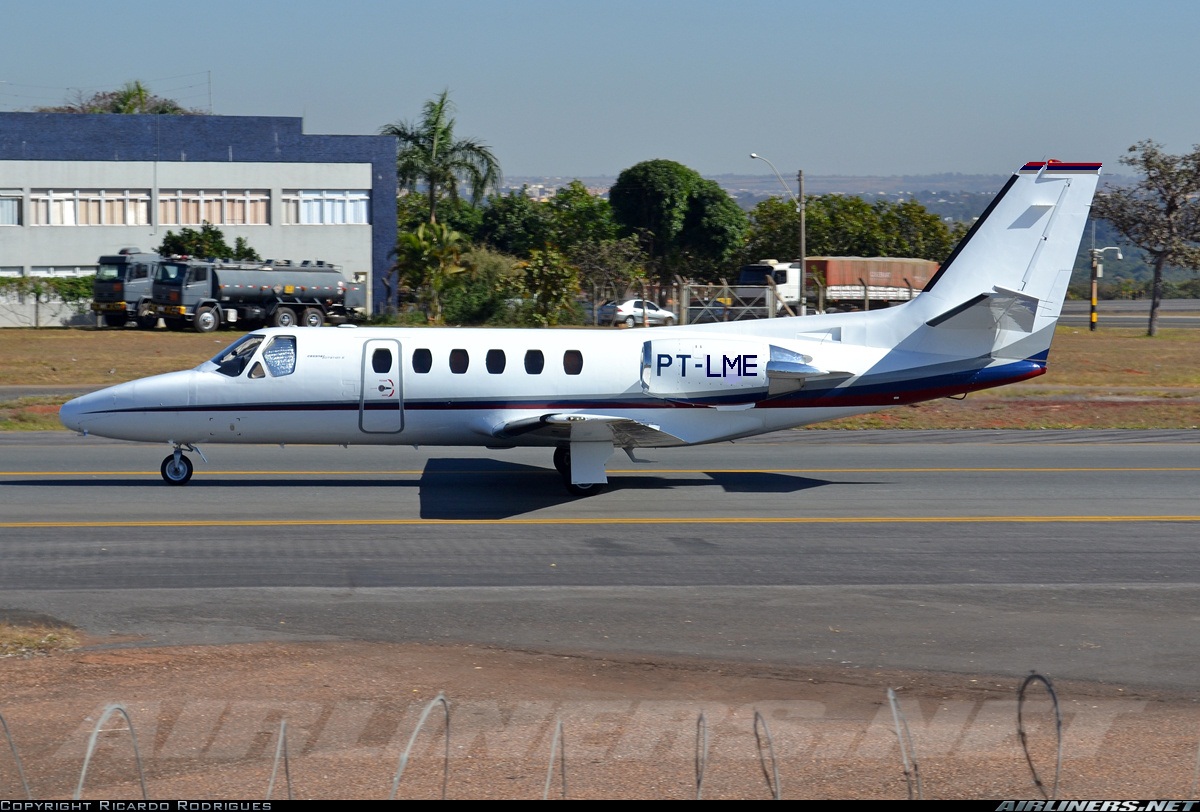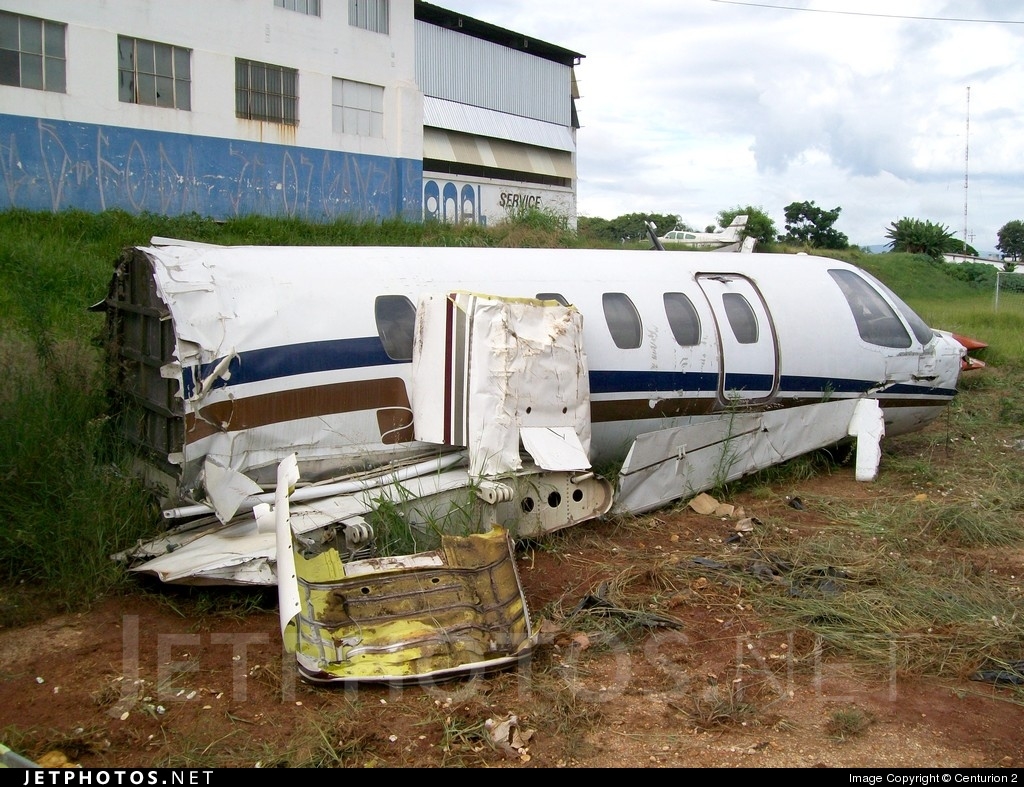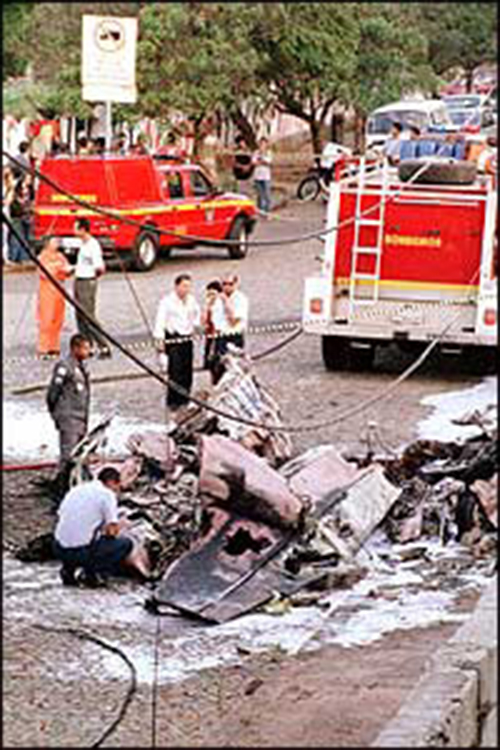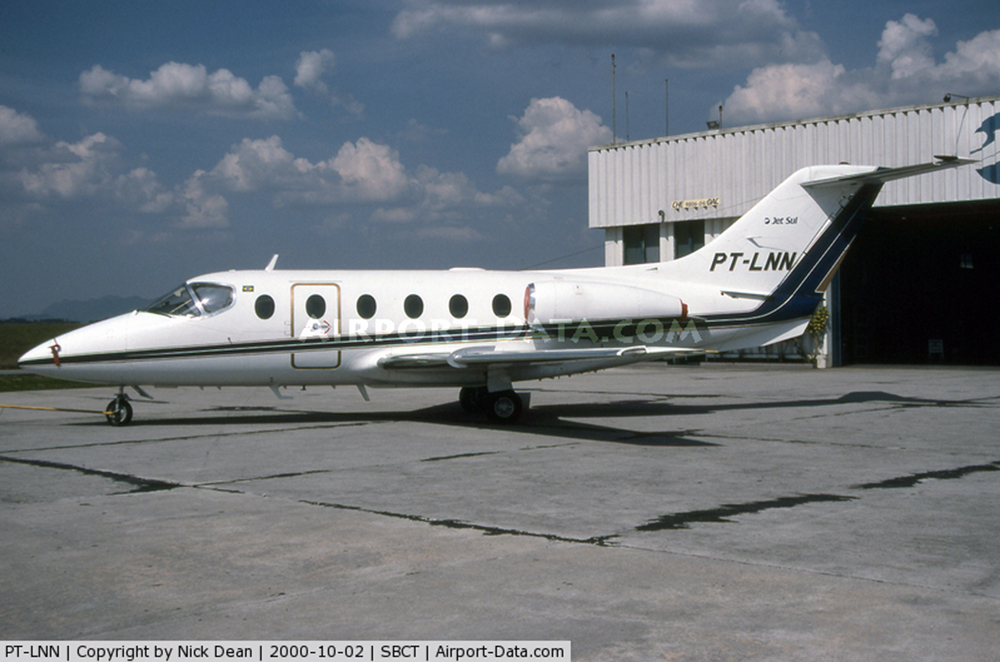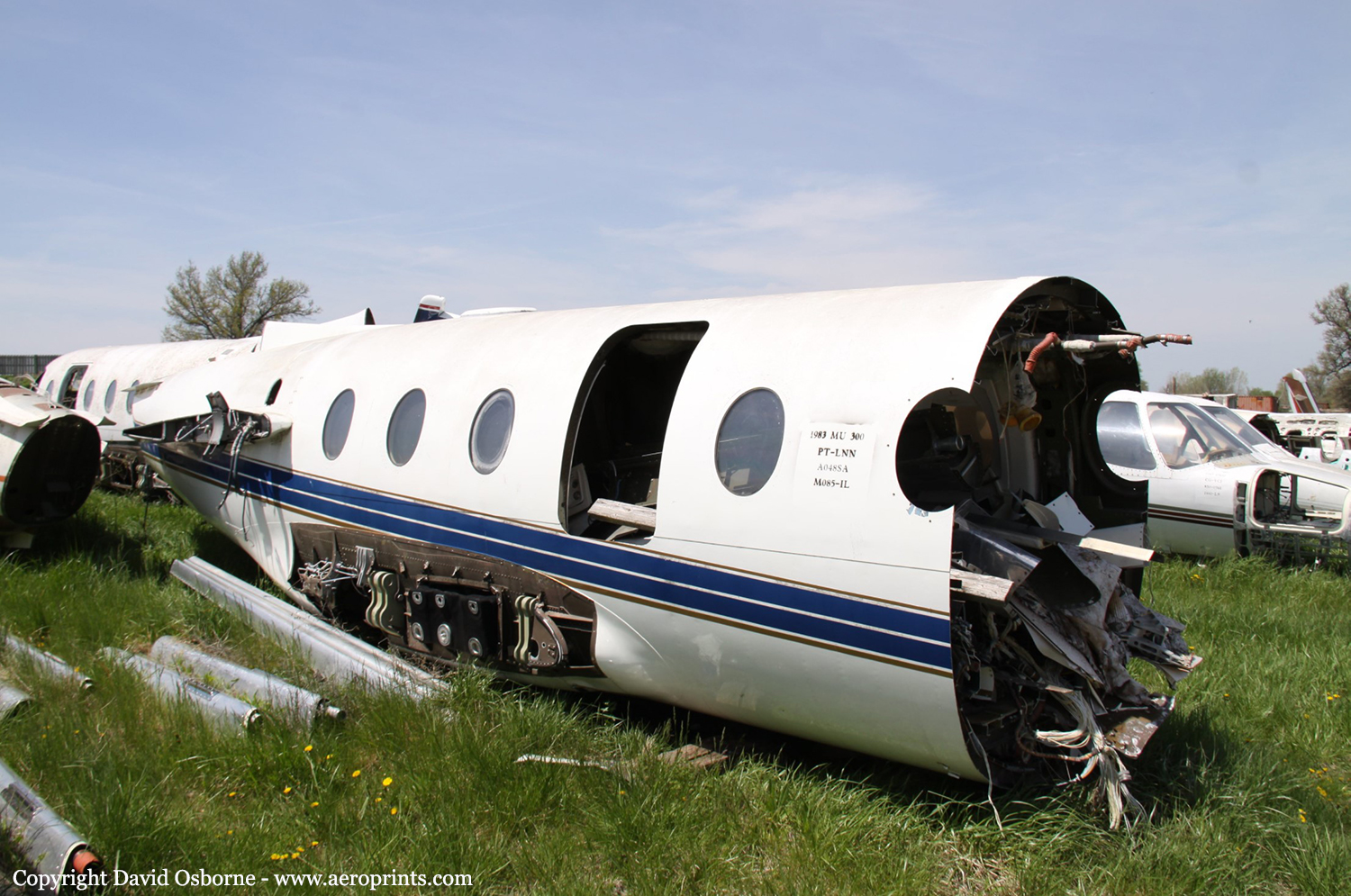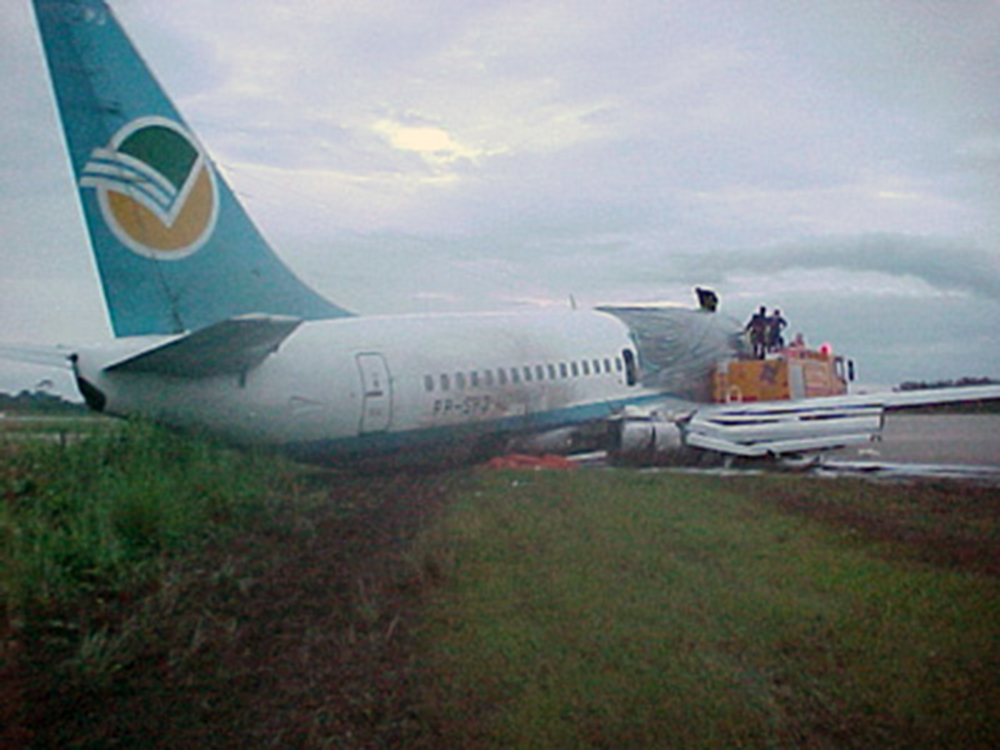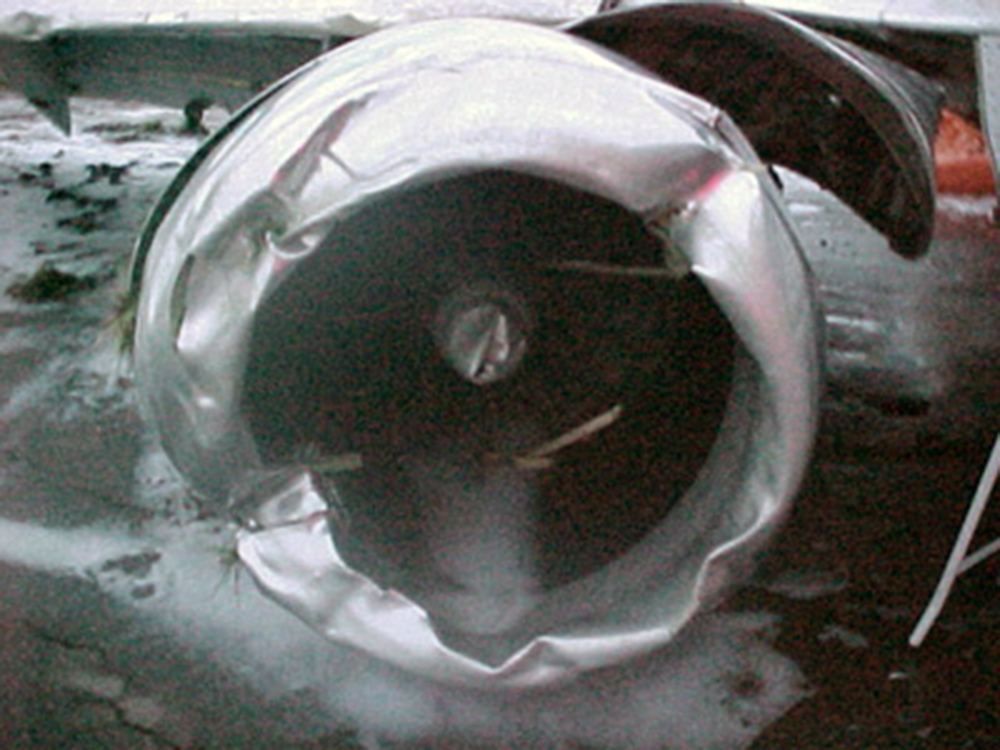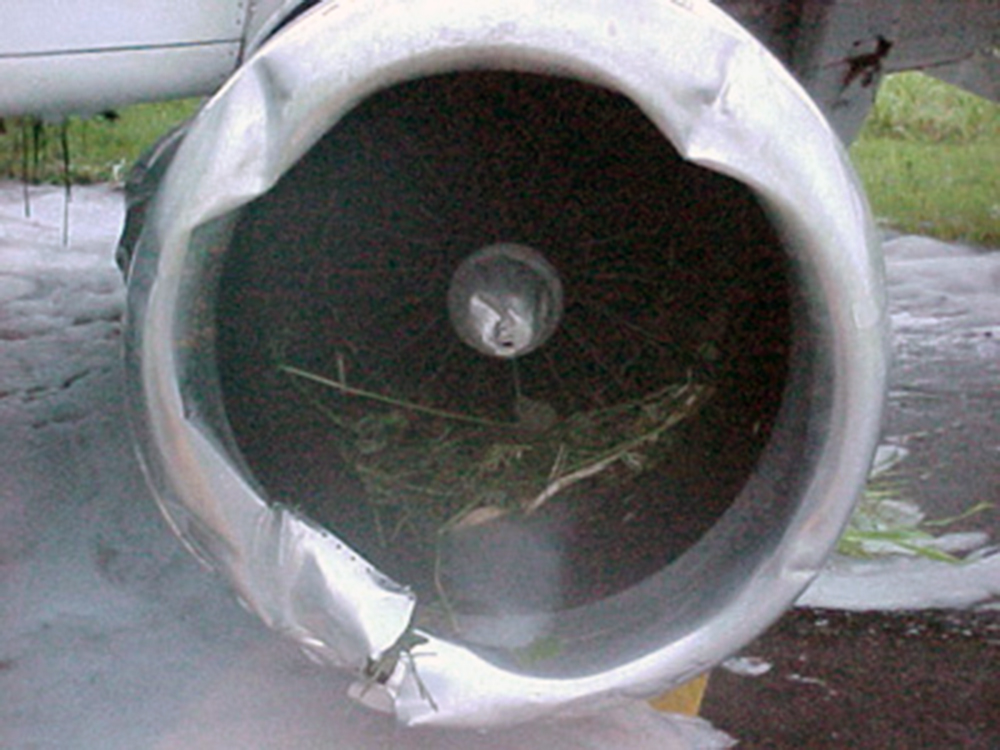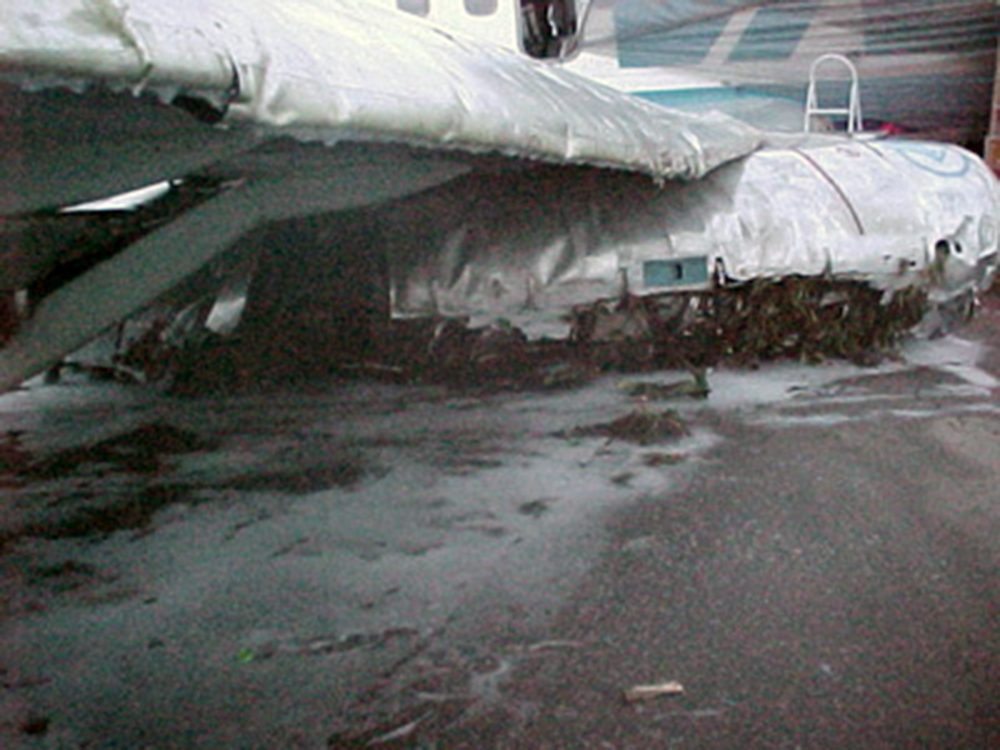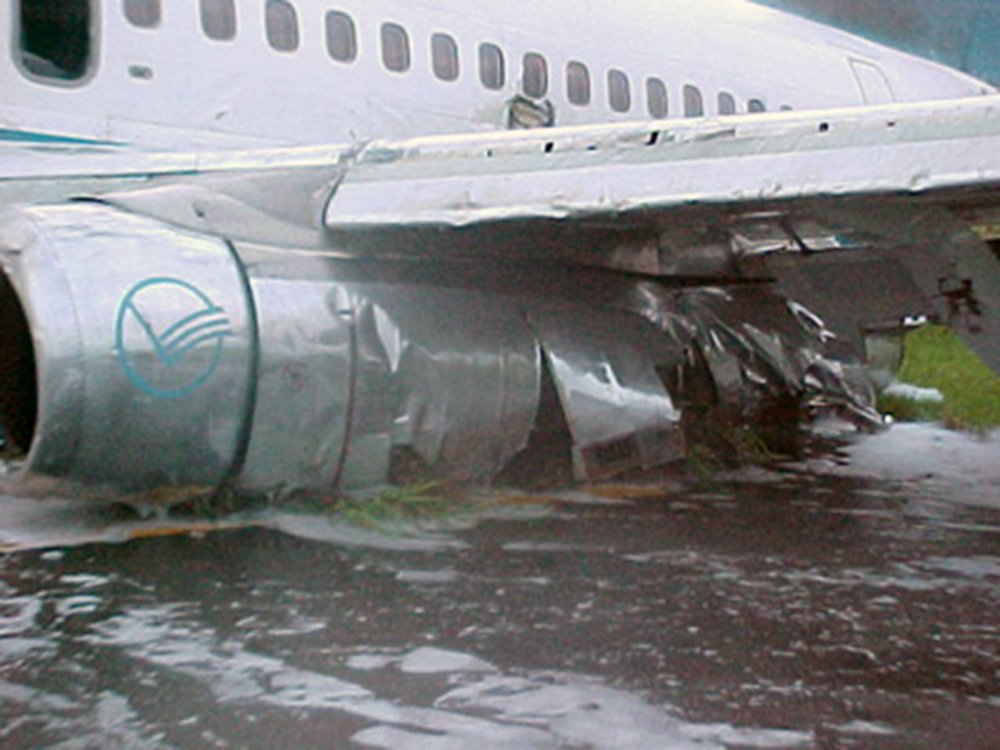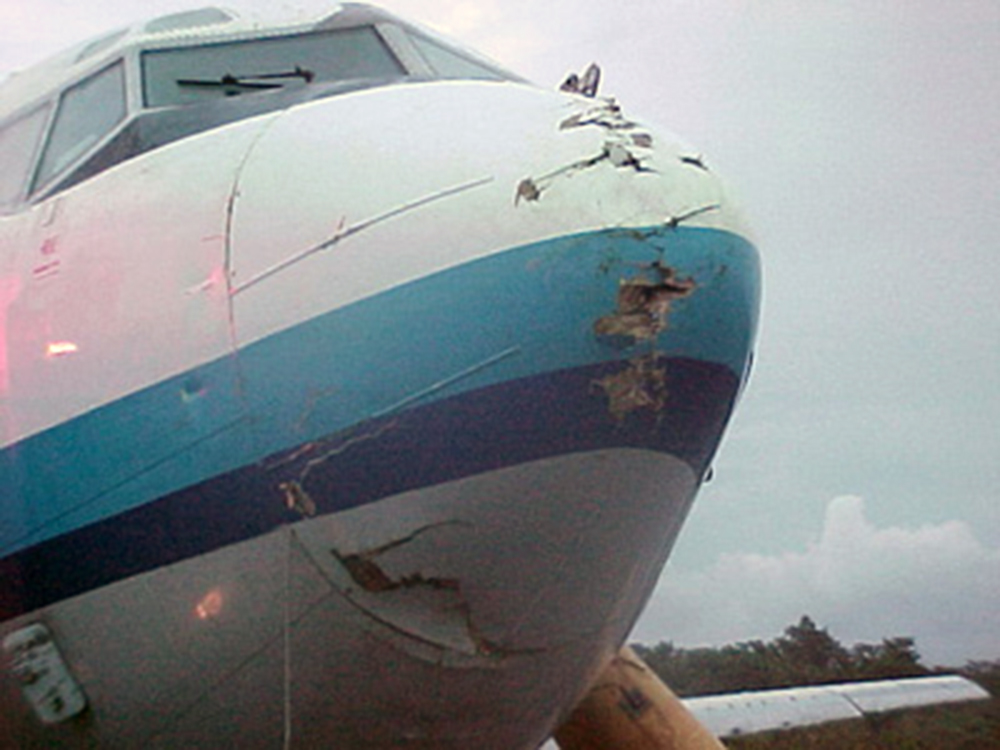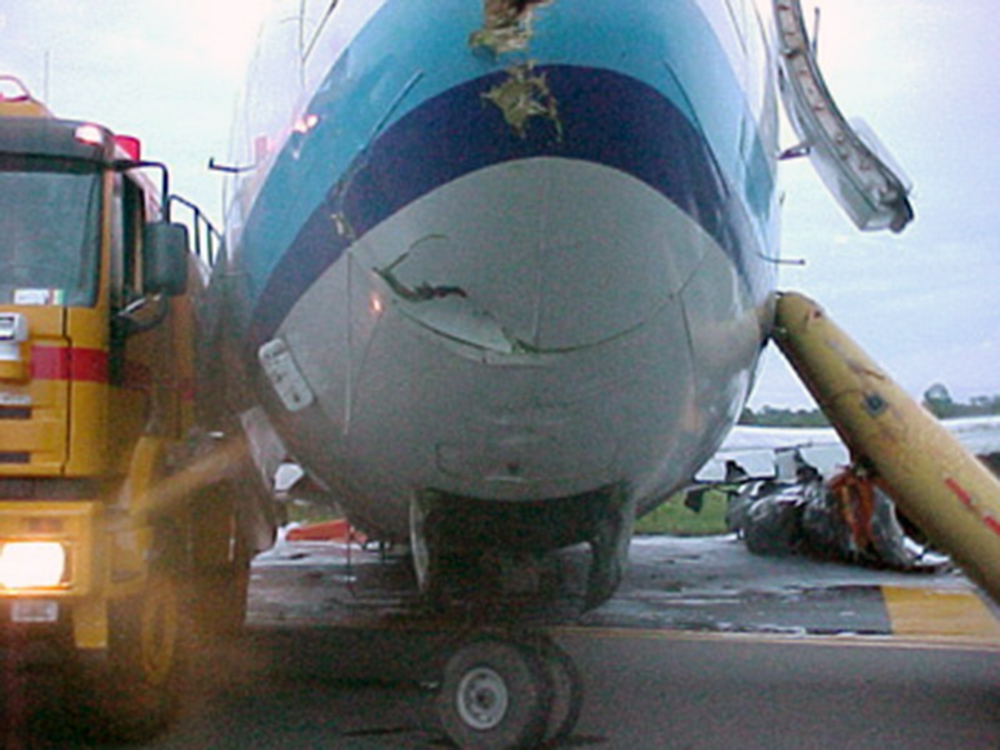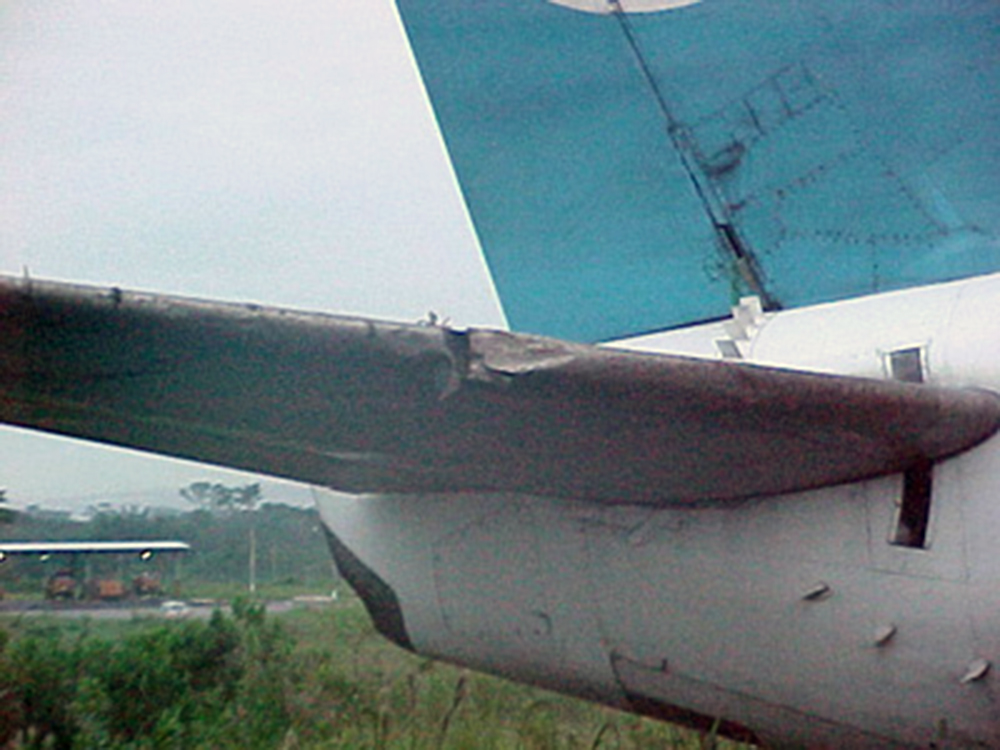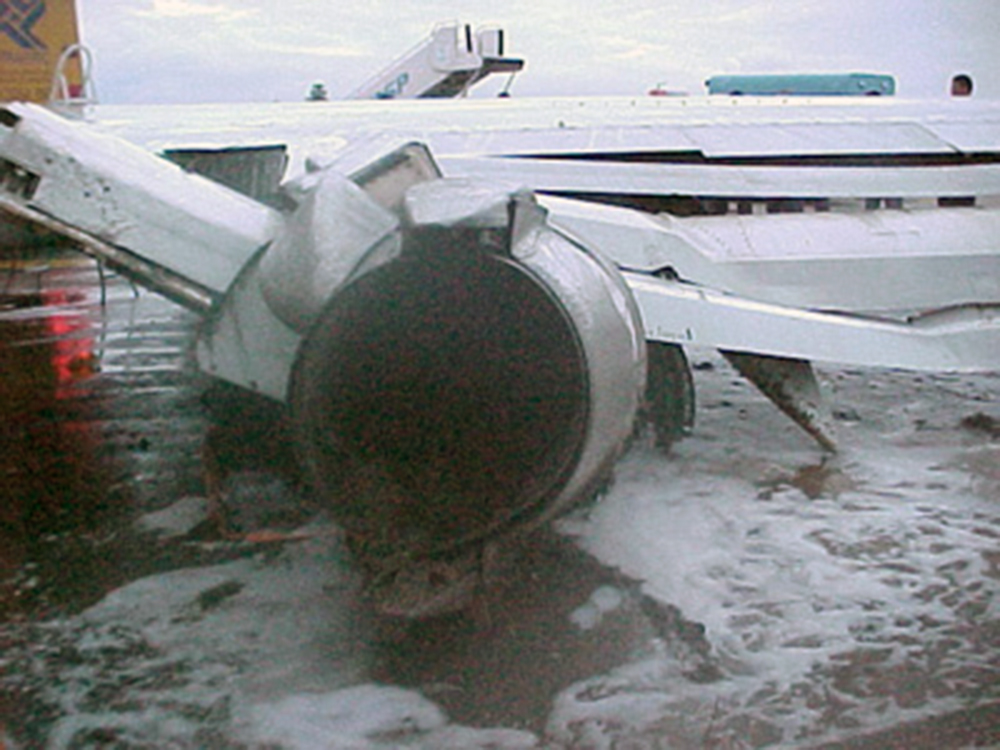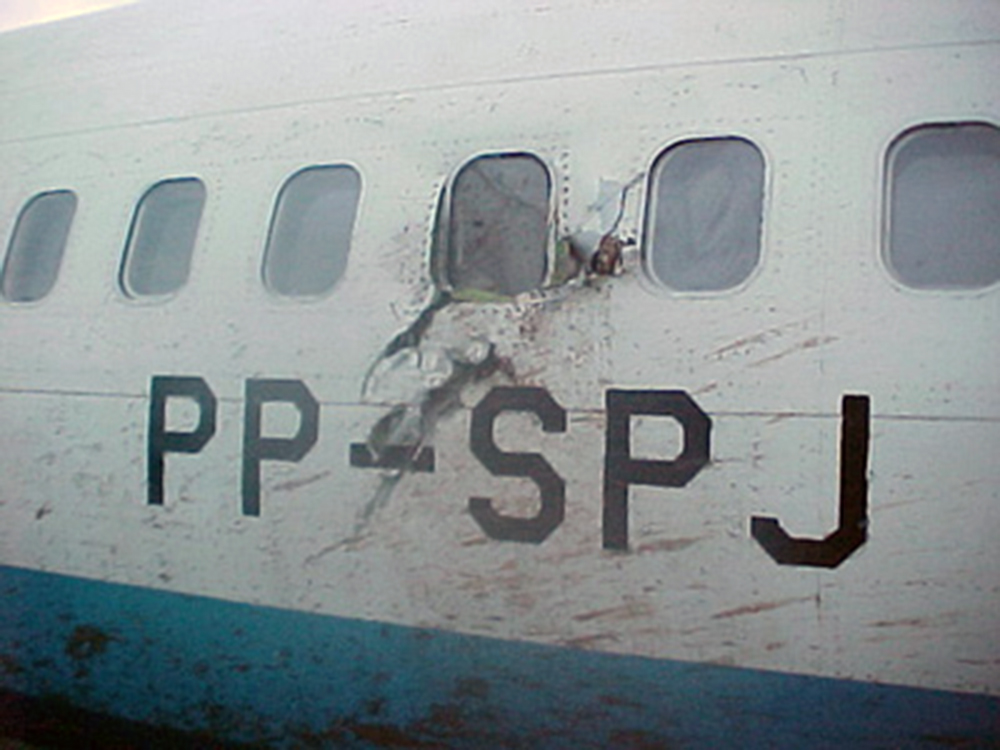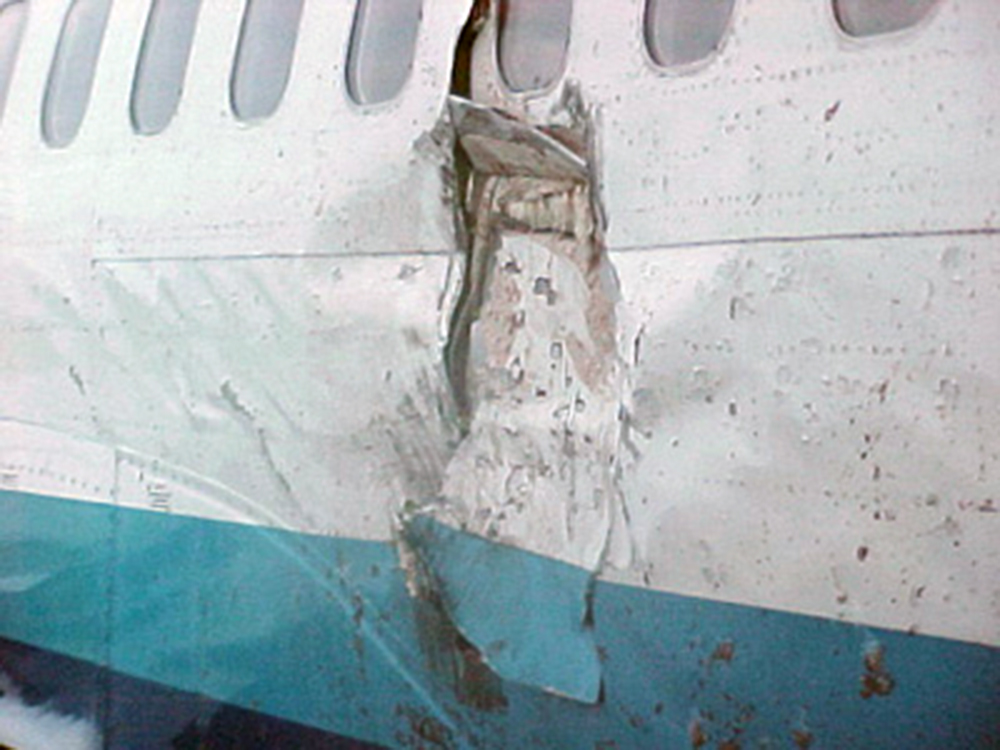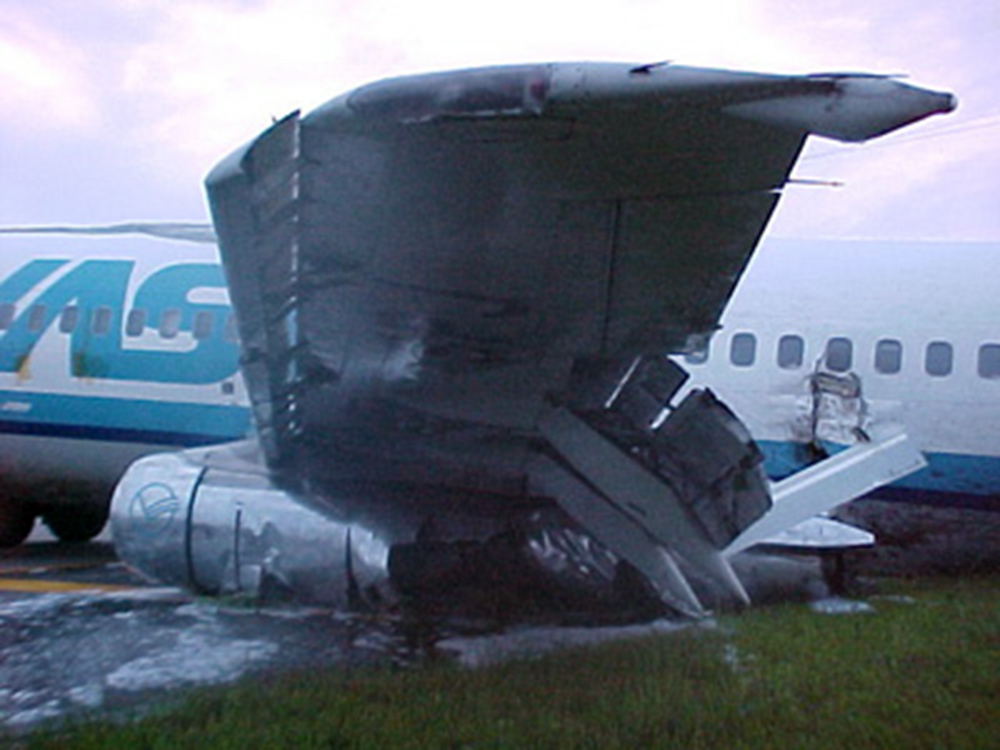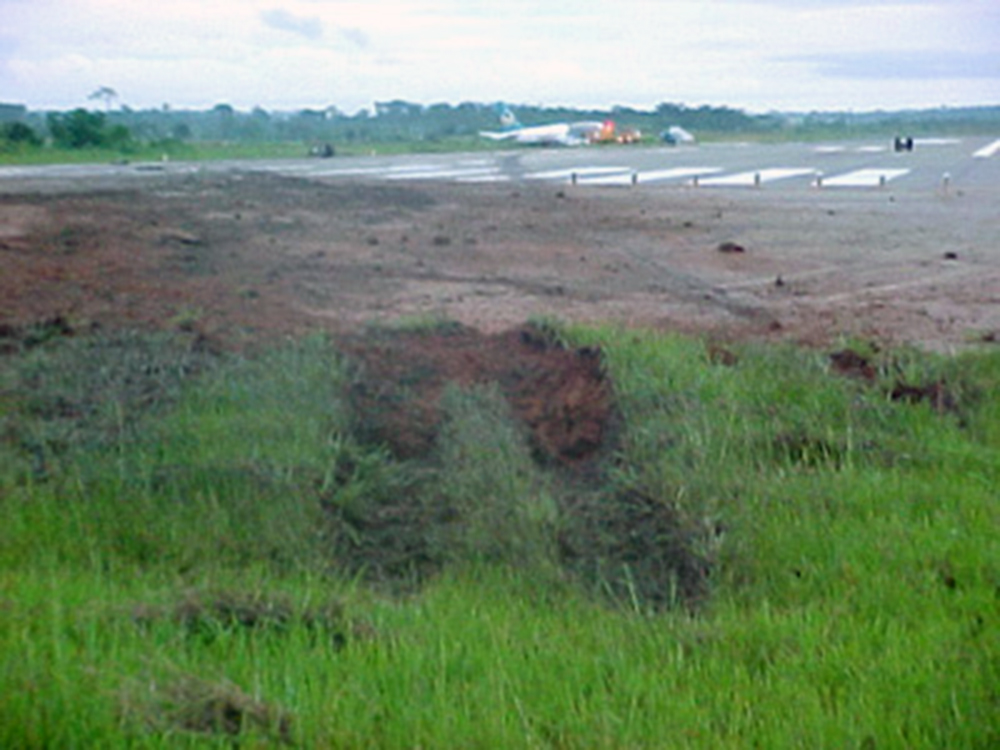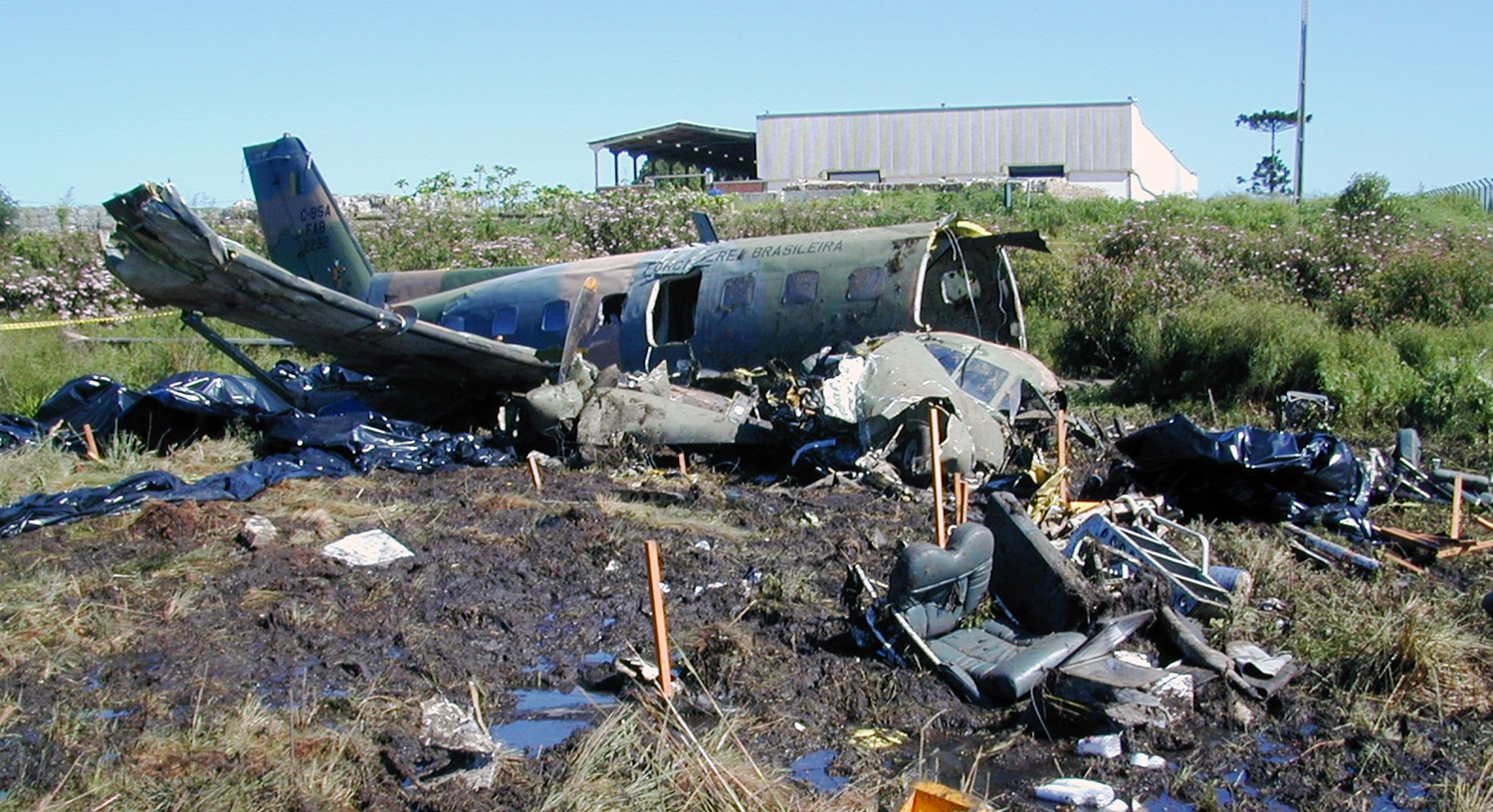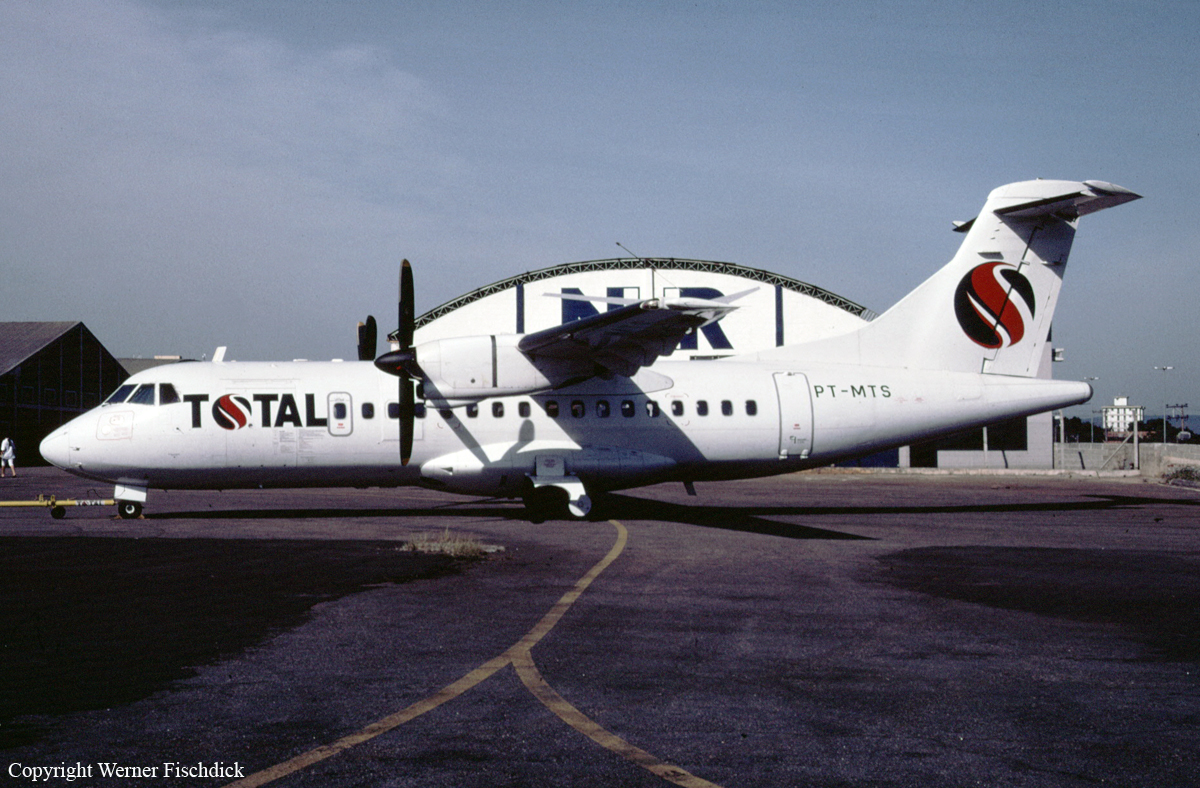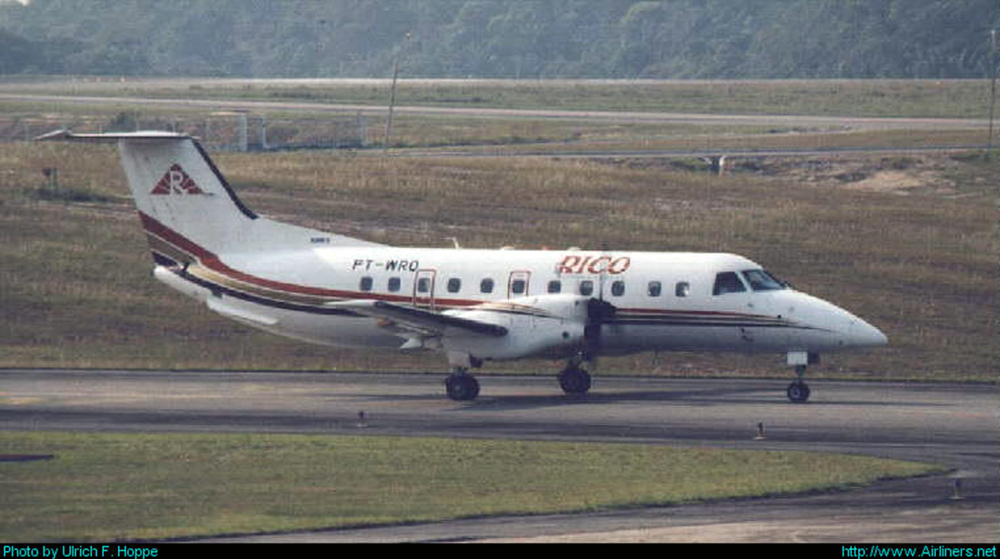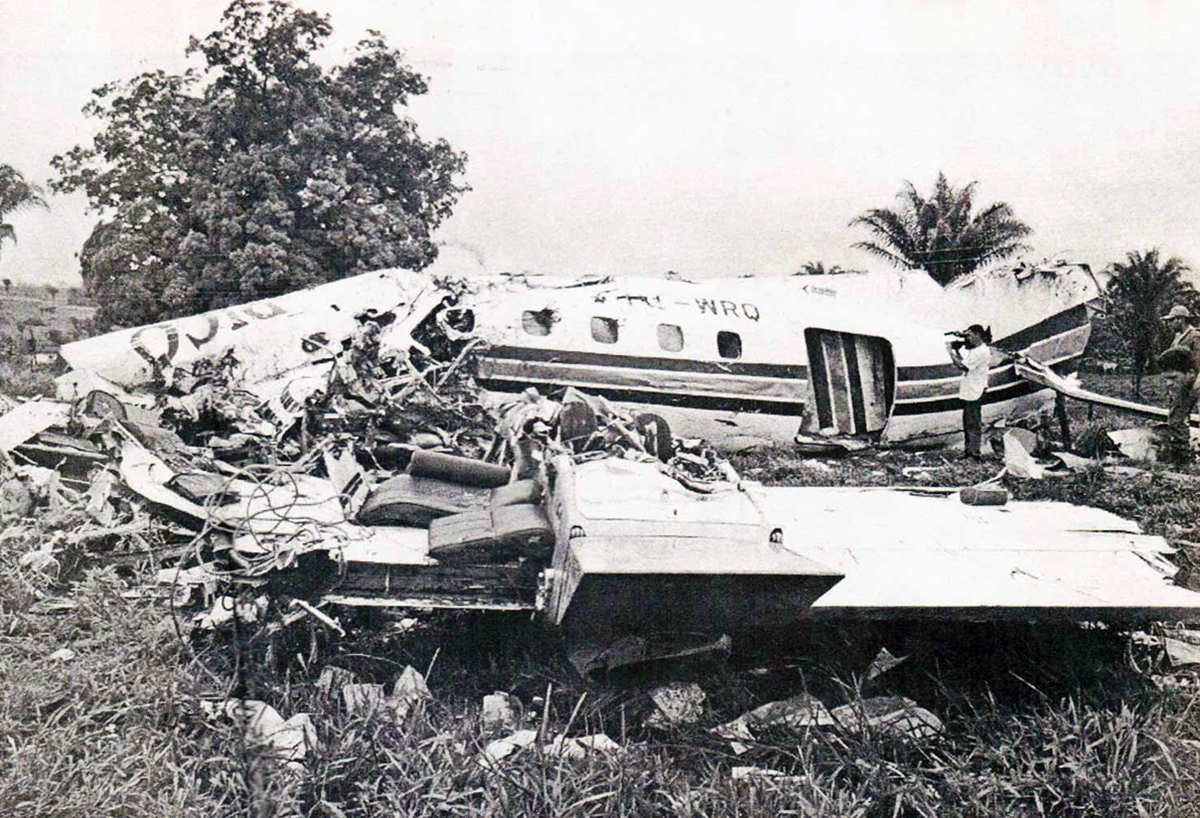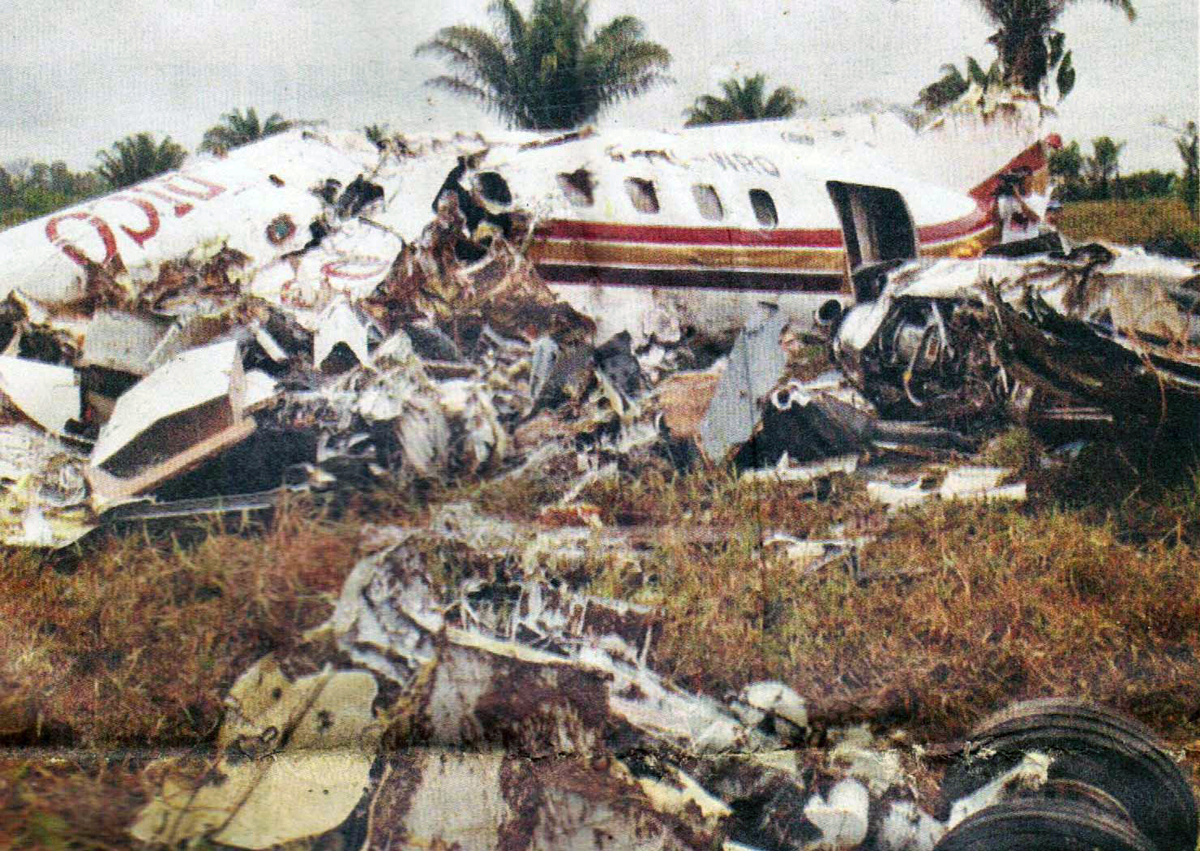Crash of a Cessna 551 Citation II/SP in Sorocaba: 1 killed
Date & Time:
Jul 23, 2003 at 0840 LT
Registration:
PT-LME
Survivors:
Yes
Schedule:
Lins - Sorocaba
MSN:
551-0023
YOM:
1980
Crew on board:
2
Crew fatalities:
Pax on board:
1
Pax fatalities:
Other fatalities:
Total fatalities:
1
Captain / Total hours on type:
1300.00
Copilot / Total hours on type:
90
Aircraft flight hours:
8761
Circumstances:
The aircraft departed Lins Airport on a ferry flight to Sorocaba with two pilots on one passenger (the owner) on board. The aircraft was transferred to Sorocaba Airport for maintenance purposes. While descending, the crew was informed that runway 36 was in use and that three small aircraft were completing local training in the circuit. In good weather conditions, the captain decided to complete a straight-in approach to runway 18. After touchdown, the aircraft was unable to stop within the remaining distance. It overran, crossed a road and came to rest into a ravine. The passenger escaped uninjured, the copilot was seriously injured and the captain was killed. The aircraft was destroyed.
Probable cause:
Wrong approach configuration on part of the crew who completed an unstabilized approach and landed too far down the runway (about a half way down) at an excessive speed. In such conditions, the aircraft could not be stopped within the remaining distance. The following contributing factors were identified:
- The crew did not make any approach briefing,
- The crew failed to follow the approach checklist,
- The aircraft had deficiencies in maintenance, particularly with regard to the brakes systems,
- The techlogs were out of date,
- Maintenance was periodic but insufficient,
- Although the runway 36 was in use, the captain preferred to land on runway 18,
- The aircraft was unstable on short final and landed too far down the runway, reducing the landing distance available,
- The aircraft' speed upon landing was excessive, preventing the reverse thrust systems to be activated,
- The captain took over control and activated the reverse thrust system on the right engine only,
- Poor crew coordination,
- The crew was operating in a conflict environment after touchdown,
- Poor judgment of the situation,
- Poor flight planning,
- Lack of crew discipline.
- The crew did not make any approach briefing,
- The crew failed to follow the approach checklist,
- The aircraft had deficiencies in maintenance, particularly with regard to the brakes systems,
- The techlogs were out of date,
- Maintenance was periodic but insufficient,
- Although the runway 36 was in use, the captain preferred to land on runway 18,
- The aircraft was unstable on short final and landed too far down the runway, reducing the landing distance available,
- The aircraft' speed upon landing was excessive, preventing the reverse thrust systems to be activated,
- The captain took over control and activated the reverse thrust system on the right engine only,
- Poor crew coordination,
- The crew was operating in a conflict environment after touchdown,
- Poor judgment of the situation,
- Poor flight planning,
- Lack of crew discipline.
Final Report:
